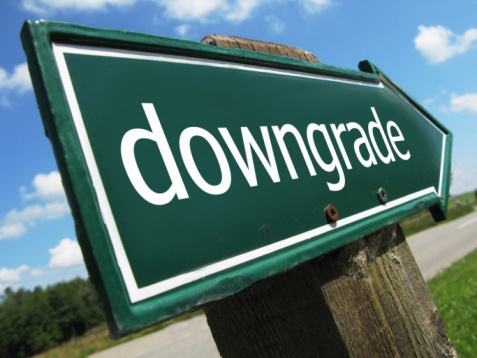Retail
Should Gap and Dillard's Both Have Been Downgraded at JPMorgan?
Published:
Last Updated:
Analysts on Wall Street often drive strong traffic and volume in or out of a stock. Sometimes they can even move an entire sector. So what happens when investors see two key downgrades an in the retail and apparel sector that seem like calls that are late to the party? These also coincide with month same-store sales results issued this week.
JPMorgan downgraded Dillard’s Inc. (NYSE: DDS) and The Gap Inc. (NYSE: GPS) on Monday. What seems odd here, on top of sentiment already having been negative, is that both calls were when shares were close to 52-week lows. These calls might have been swept under the rug on Monday due to a serious recovery rally. Still, the timing is worth addressing and considering, particularly in light of poor sales trends continuing for Gap after the close on the same day.
Dillard’s was downgraded to Underweight from Neutral in its call. The $89.00 price target was versus a prior price of $97.67. Dillard’s shares were up 0.7% at $98.38 right before the closing bell on Monday, with a consensus price target of $111.17 and a 52-week trading range of $95.55 to $144.21. That 52-week low was seen on Monday.
Dillard’s was cut because of structural constraints, negative traffic numbers, its brand cycle and other measures. Strong competition was only a part of the reason for Dillard’s to get its downgrade.
ALSO READ: 6 Analyst Stocks Picked to Rise 50% to 100%
Dillard’s trades at about 12 times earnings, but sales growth is expected to be almost nil, even if earnings per share are expected to growth. Dillard’s has a paltry dividend and a market cap of just under $4 billion.
The Gap was downgraded to Underweight from Neutral. That is effectively an even stronger “Sell” rating — particularly with Gap’s price target being set at $29.00 after closing at $34.89. Gap’s share price was up almost 1% at $35.20 late on Monday, with a consensus price target up at $41.04 and a 52-week range of $34.32 to $46.85. Gap was within three cents of hitting that 52-week low again.
Gap’s downgrade at JPMorgan was due to limited market share recovery possibilities, off-price competition and deflation taking place in the sector. Flat traffic results were also cited.
Gap trades at about 12 times expected earnings, but current earnings growth has stalled with revenues. The pullback has even valued that $0.92 annualized dividend at about 2.6%.
Another issue is that right after the close came a report that Gap’s net sales for the four-week period ended August 1, 2015, were $1.12 billion, compared with net sales of $1.17 billion a year ago. For the second quarter of fiscal year 2015, Gap’s net sales fell by 2% to $3.90 billion, compared with $3.98 billion for the second quarter last year. Sales would have been about flat had it not been for currency woes. Here were the same-store comparable sales for July:
ALSO READ: 5 Defensive Dividends That Will Survive the Next Market Correction
Investors decided to discount these downgrades on Monday. These both seem to offer very little new information in the downgrade. Still, one common theme here that investors might want to consider is that an immediate turnaround or snapback recovery just doesn’t look to be in the cards any time soon.
Retirement can be daunting, but it doesn’t need to be.
Imagine having an expert in your corner to help you with your financial goals. Someone to help you determine if you’re ahead, behind, or right on track. With SmartAsset, that’s not just a dream—it’s reality. This free tool connects you with pre-screened financial advisors who work in your best interests. It’s quick, it’s easy, so take the leap today and start planning smarter!
Don’t waste another minute; get started right here and help your retirement dreams become a retirement reality.
Thank you for reading! Have some feedback for us?
Contact the 24/7 Wall St. editorial team.